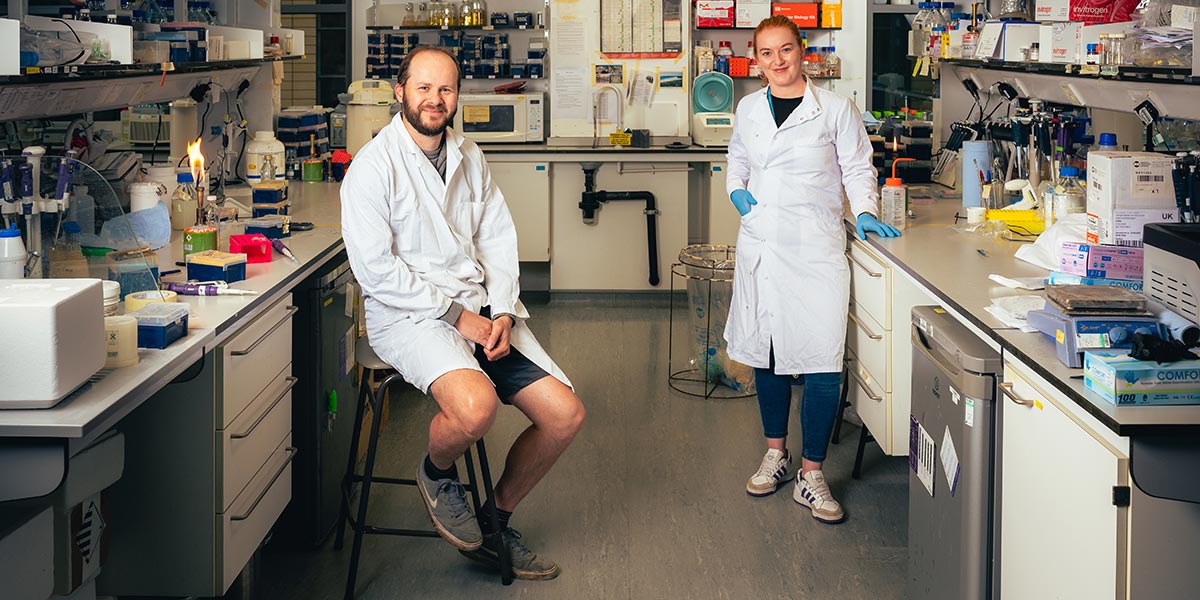For most people it might be nothing more than an awkward social stigma. But for scientists at York, body odour (BO) holds the key to scientific insights into the millions of bacteria that live on our skin - and offers clues to the way our earliest ancestors used bodily smells as a method of communication.
Working with scientists at the University of Oxford, the project has taken UK multinational Unilever a step closer to more effective deodorants. And, as a result of the research, we have a better understanding of the importance of overall skin health and the role of our skin as a shield against infection and disease.
The team had a chance to showcase their work at the prestigious Royal Society exhibition in a series of videos, lectures and online digital content.
“There’s growing acceptance of the importance of the role of bacteria in good gut health and its role in preventing disease. The work we are doing here at York also helps us understand the importance of maintaining a diverse range of microorganisms on our skin,” explained Dr Michelle Rudden who works on the research project with Professor Gavin Thomas in our Department of Biology.
“The trick with body odour is to target the specific bacteria that cause BO without wiping out all the other beneficial microorganisms at the same time.”
Bacteria
Working with industrial partner Unilever, Professor Thomas and his team pinpointed the type of bacteria that lives in the sweat gland where BO is formed.
There are two different types of sweat glands - the eccrine glands are found all over the body including the palms of our hands and soles of our feet. The other type of sweat glands, known as the apocrine glands are usually found in areas with hair follicles - such as the armpits. It’s this type of gland, combined with the actions of bacteria, that support the processes behind BO.
The team identified one particularly problematic bacteria known as Staphylococcus hominis which thrives in the warm, nutrient rich environment found in our armpits. Research with collaborators in Oxford unravelled the structure of a protein that enables the Staphylococcus bacteria to recognise and swallow up the compounds secreted in sweat. The final link in the puzzle was to identify the unique enzyme found within the bacteria which produces some of the key molecules we recognise as BO.
Dr Rudden said: “Solving the structure of this BO enzyme was a key advancement in our understanding of how body odour works. In the same way that we know antibiotics can upset the balance of healthy bacteria in our gut, deodorants have the potential to upset the balance of healthy bacteria on our skin, leaving us susceptible to skin infection. A deodorant that targets the specific bacteria causing the smell will be more beneficial to our overall skin health.” The later structure was solved in collaboration with Professor Tony Wilkinson and colleagues in the York Structural Biology Laboratory.
Armed with this new understanding of our skin’s complex bacterial ecosystem, Dr Rudden says there is now potential to explore new emerging areas of research linked to wound healing or the development of synthetic skin.
Prehistoric pong
As well as improving our understanding of the science behind sweat, the research also uncovered clues about its role in the evolution of our earliest ancestors.
The ‘BO enzyme’ identified by the researchers is thought to have been present in bacteria tens of millions of years ago - and as Homo sapiens evolved as a species, the distinctive smell caused by the bacteria may have had a role in societal communication.
Now we’ve got more effective, and less smelly ways of communicating - but the BO remains.
“It’s been a fascinating research journey,” said Dr Rudden. “It combines science with industrial collaboration - and some evolutionary insights - to address a common social problem."
The text of this article is licensed under a Creative Commons Licence. You're free to republish it, as long as you link back to this page and credit us.






